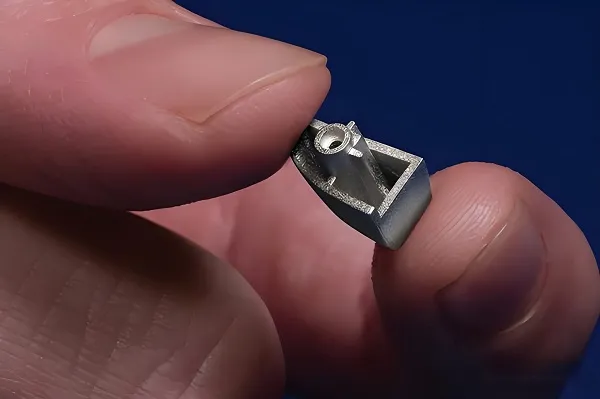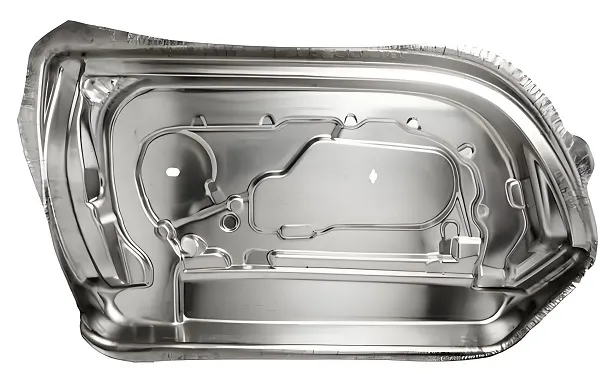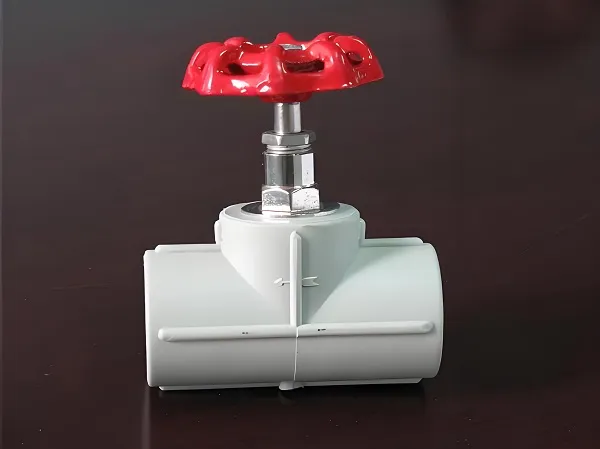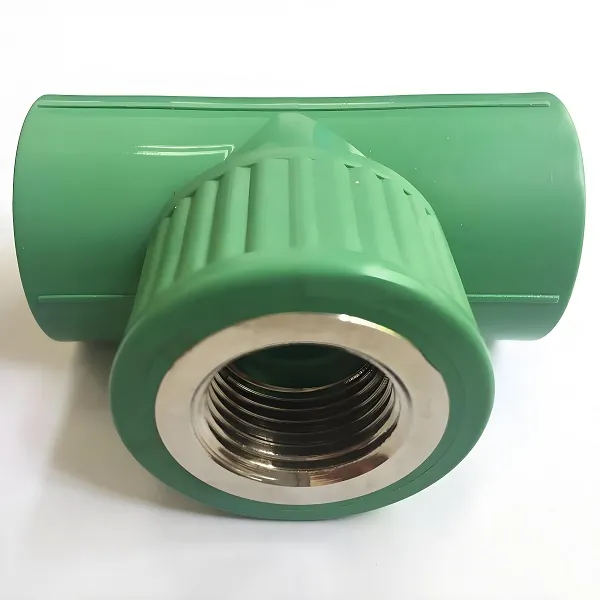In the ever – evolving landscape of modern technology, effective thermal management is the linchpin for the optimal performance and longevity of electronic devices, automotive components, and industrial machinery. Aluminum profile CNC machining has emerged as the go – to solution for crafting high – performance heatsink parts that efficiently dissipate heat, ensuring seamless operation even under the most demanding conditions. This article delves into the technical prowess, customization process, material selection, quality control measures, and diverse industry applications of aluminum profile CNC machining for heatsink parts, highlighting how these precision – engineered components drive innovation and reliability across various sectors.
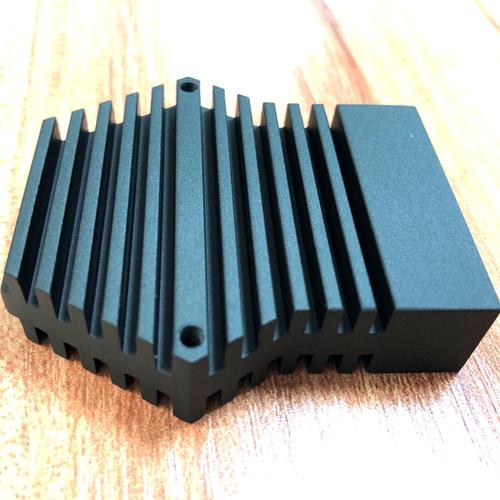
I. Technical Capabilities: Unparalleled Precision in Heat Dissipation
(A) Microscopic Dimensional Accuracy
Our state – of – the – art CNC machining centers are calibrated to achieve astonishing dimensional accuracy, with positioning accuracy reaching ±0.002mm and repeat positioning accuracy of ±0.001mm. When it comes to heatsink parts, such as fins and bases, these precise tolerances are non – negotiable. For instance, in high – power LED lighting applications, the thickness of fins needs to be consistent to maximize surface area for heat dissipation. Our advanced in – line measuring systems, equipped with laser sensors, continuously monitor and adjust the machining process in real – time, ensuring that each heatsink part adheres to the strictest dimensional specifications, thus enhancing overall thermal performance.
(B) Complex Geometry Machining
The versatility of our 5 – axis CNC machining technology allows for the creation of heatsink parts with highly complex geometries. From intricately designed pin – fin arrays that optimize airflow for maximum heat transfer to heatsink bases with elaborate internal channels for liquid cooling systems, we can bring even the most challenging designs to life. Compared to traditional machining methods, our 5 – axis CNC machining reduces setup – related errors from ±0.01mm to within ±0.003mm. This not only improves the precision of the parts but also significantly boosts production efficiency by up to 70%, enabling us to deliver complex heatsink parts in a timely manner without compromising on quality.
(C) High – Speed and High – Precision Machining
Our CNC machining equipment is engineered for high – speed operations without sacrificing precision. With spindle speeds of up to 30,000 RPM and rapid traverse rates of 60m/min, we can quickly remove material while maintaining a surface finish as fine as Ra 0.4μm. Automated tool changers with a large capacity (up to 60 tools) ensure continuous operation, minimizing downtime during the machining process. For example, when producing a batch of standard aluminum heatsink fins, our high – speed CNC machining can complete the job in just one – third of the time it would take with conventional methods, all while ensuring that the fins have the exact dimensions and surface quality required for optimal heat dissipation.
II. End – to – End Customization: Tailoring Heatsink Parts to Your Specific Needs
(A) In – Depth Requirement Analysis and Design Conceptualization
When you approach us with your heatsink part requirements, our team of experienced thermal and mechanical engineers begins by engaging in detailed discussions to understand your application. We consider factors such as the power consumption of the device, the operating environment (including temperature, humidity, and airflow conditions), and any space constraints or aesthetic requirements. Using advanced CAD/CAM software and computational fluid dynamics (CFD) simulations, we generate multiple design concepts. We then work closely with you, iteratively refining the designs based on your feedback, until we arrive at a solution that perfectly aligns with your performance goals and budget. Whether you need a custom – designed heatsink for a cutting – edge server rack or a specialized part for an automotive engine control unit, we have the expertise to bring your vision to reality.
(B) Strategic Material Selection and Cost Analysis
Based on the finalized design, we recommend the most suitable aluminum alloy for your heatsink parts. Different aluminum alloys offer varying combinations of thermal conductivity, strength, and cost – effectiveness. For example:
6063 Aluminum Alloy: With a thermal conductivity of 180 W/m·K and good formability, it is the industry standard for general – purpose heatsink applications. It is commonly used in consumer electronics, LED lighting, and HVAC systems due to its excellent anodizing capabilities, which enhance both corrosion resistance and aesthetics.
6061 Aluminum Alloy: Boasting a higher tensile strength (310 MPa) while still maintaining a decent thermal conductivity of 167 W/m·K, 6061 is ideal for applications where structural integrity is as important as heat dissipation. It is often chosen for automotive and industrial heatsink parts that need to withstand mechanical stress in addition to managing heat.
1050 Aluminum Alloy: As a pure aluminum alloy, 1050 offers the highest thermal conductivity among commonly used aluminum alloys at 229 W/m·K. It is the top choice for high – power applications where maximum heat transfer is crucial, such as in power amplifiers and high – performance computing systems, despite its relatively lower strength.
Simultaneously, we conduct a comprehensive cost analysis, factoring in material costs, machining complexity, production volume, and any additional finishing or assembly requirements. Our goal is to provide you with a transparent and competitive quote that offers the best value for your investment, helping you make an informed decision about the material and design of your heatsink parts.
(C) Precision Manufacturing and Order Tracking
Once you approve the design and quote, production kicks off. You can track the progress of your order in real – time through our dedicated online platform. Our skilled technicians operate the latest CNC turning, milling, and drilling machines, following strict manufacturing protocols to ensure that each heatsink part meets our exacting quality standards. From raw material procurement to the final machining and finishing operations, we keep you informed at every stage of the process, providing you with peace of mind and confidence in the timely delivery of your parts. Whether you order a single prototype or a large – scale production run, we are committed to delivering your heatsink parts on schedule, without compromising on quality.
(D) Rigorous Quality Assurance and Timely Delivery
After production, each heatsink part undergoes a rigorous multi – stage quality inspection. We use coordinate measuring machines (CMMs) with sub – micron accuracy to verify dimensional accuracy, ensuring that all critical dimensions are within ±0.002mm. Surface finish measurements are taken to ensure that the surface roughness meets the required specifications for optimal heat transfer and aesthetics. In addition, we conduct thermal performance tests in our in – house climate – controlled chambers, simulating real – world operating conditions to ensure that the heatsink parts can effectively dissipate heat under various loads. Non – destructive testing methods, such as ultrasonic testing, are also employed to detect any internal defects that could affect the performance or durability of the parts. Only parts that pass all these stringent tests are packaged and shipped to you. We also offer comprehensive after – sales support, addressing any concerns you may have and ensuring that your heatsink parts perform as expected throughout their lifecycle.
III. Strategic Material Selection: Harnessing the Power of Aluminum Alloys
(A) 6063 Aluminum Alloy: The Workhorse of Heatsink Manufacturing
6063 aluminum alloy is a popular choice for heatsink parts due to its well – balanced properties. Its relatively high thermal conductivity allows for efficient heat transfer, while its good formability enables the creation of complex fin geometries through extrusion and subsequent CNC machining. The alloy’s excellent anodizing characteristics make it easy to apply a protective and aesthetically pleasing coating, which not only enhances corrosion resistance but also improves the emissivity of the heatsink surface, facilitating better heat dissipation. Whether it’s for a simple consumer electronics device or a more complex industrial control panel, 6063 aluminum alloy heatsink parts offer reliable performance at a reasonable cost.
(B) 6061 Aluminum Alloy: Strength Meets Thermal Performance
6061 aluminum alloy stands out for its higher strength compared to 6063, making it suitable for applications where the heatsink parts need to withstand mechanical forces in addition to managing heat. In automotive applications, for example, 6061 heatsink parts are used in engine compartments, where they not only dissipate heat generated by electronic control units but also endure vibrations and temperature fluctuations. Despite its increased strength, 6061 still maintains a decent thermal conductivity, ensuring that it can effectively transfer heat away from the heat – generating components. This combination of strength and thermal performance makes 6061 aluminum alloy a versatile choice for a wide range of heatsink applications in the automotive, aerospace, and industrial sectors.
(C) 1050 Aluminum Alloy: Unmatched Thermal Conductivity
For applications where maximizing heat transfer is the top priority, 1050 aluminum alloy is the material of choice. As a nearly pure aluminum alloy, it offers the highest thermal conductivity among commonly used aluminum alloys, making it ideal for high – power electronics and other applications where efficient heat dissipation is critical. In power supplies, servers, and data centers, 1050 aluminum alloy heatsink parts can effectively manage the large amounts of heat generated by high – performance processors and other components, preventing overheating and ensuring the stable operation of the equipment. Although it has lower strength compared to other aluminum alloys, its superior thermal properties make it indispensable in applications where thermal performance takes precedence.
IV. Stringent Quality Control: Ensuring Excellence in Every Heatsink Part
(A) Raw Material Inspection
All incoming aluminum raw materials are subject to strict quality checks before they are used in production. We perform spectroscopic analysis to verify the chemical composition of the alloys, ensuring that they meet the specified standards. Hardness testing, tensile testing, and thermal conductivity testing are also conducted to assess the mechanical and thermal properties of the materials. Only raw materials that pass these rigorous inspections are approved for use in manufacturing our heatsink parts, laying a solid foundation for the quality and performance of the final products.
(B) In – Process Monitoring
Throughout the manufacturing process, we employ advanced monitoring technologies to ensure consistent quality. Real – time sensors continuously monitor key machining parameters, such as cutting speeds, feed rates, and tool wear. Statistical process control (SPC) techniques are used to analyze the data collected from these sensors, allowing us to detect and correct any potential issues promptly. If any parameter deviates from the set values, our automated systems can adjust the machining process in real – time to maintain the desired quality level. This proactive approach to quality control helps us prevent defects from occurring and ensures that every heatsink part meets our high – quality standards.
(C) Final Product Validation
Before shipping, each heatsink part undergoes a comprehensive final inspection. In addition to the dimensional and surface finish checks mentioned earlier, we also perform functional tests to verify the thermal performance of the parts. Our in – house thermal testing facilities are equipped with the latest equipment to simulate a wide range of operating conditions, from low – power to high – power scenarios, and different environmental temperatures and airflow rates. We also conduct visual inspections to ensure that the parts are free from any surface defects or cosmetic imperfections. Only heatsink parts that pass all these final validation tests are considered ready for delivery, ensuring that you receive products that are of the highest quality and meet your expectations.
V. Diverse Industry Applications: Cooling Solutions for Every Sector
(A) Electronics Industry
In the electronics industry, where miniaturization and high – performance are the norms, efficient thermal management is essential. Our aluminum profile CNC – machined heatsink parts are used in a wide variety of electronic devices, from smartphones and laptops to high – end servers and data centers. For example, in smartphones, our compact and lightweight heatsink parts help dissipate the heat generated by the processor, battery, and other components, preventing overheating and ensuring smooth operation. In data centers, our large – scale heatsink solutions for server racks can handle the massive amounts of heat generated by thousands of processors, ensuring the reliable operation of the entire data center infrastructure.
(B) Automotive Industry
The automotive industry is constantly evolving, with the increasing adoption of electric vehicles (EVs) and advanced driver – assistance systems (ADAS). These technologies generate a significant amount of heat, which needs to be effectively managed to ensure safety and performance. Our aluminum heatsink parts are used in various automotive applications, including EV battery packs, electric motor controllers, and ADAS sensors. For EV battery packs, our heatsink parts help maintain the optimal operating temperature of the batteries, extending their lifespan and improving the vehicle’s range. In electric motor controllers, our precision – engineered heatsink parts ensure that the electronics are cooled efficiently, enabling the motor to operate at peak performance.
(C) Industrial Equipment
Industrial machinery often operates in harsh environments and under heavy loads, generating a substantial amount of heat. Our aluminum profile CNC – machined heatsink parts are designed to withstand these challenging conditions and provide reliable thermal management solutions. In industrial power supplies, our heatsink parts help dissipate the heat generated by the power – conversion components, ensuring stable power output. In manufacturing equipment, such as CNC machines and robotic arms, our heatsink parts keep the control electronics cool, preventing overheating and reducing the risk of equipment failure.
(D) Renewable Energy
The renewable energy sector, including solar and wind power, also benefits from our high – quality heatsink parts. In solar inverters, our aluminum heatsink parts play a crucial role in dissipating the heat generated during the conversion of solar energy into electricity. By keeping the inverter components cool, our heatsink parts help improve the efficiency and lifespan of the inverters, maximizing the energy output of the solar power system. In wind turbines, our heatsink parts are used in the control systems and power electronics, ensuring that these critical components operate reliably in the harsh outdoor environment, even in extreme weather conditions.
VI. Frequently Asked Questions (FAQ)
(A) What is the typical lead time for custom aluminum heatsink parts?
The lead time for custom aluminum heatsink parts depends on several factors, including the complexity of the design, the materials used, and the production volume. For simple designs and small – scale production runs (up to 100 pieces), we can typically deliver the parts within 5 – 7 business days. For more complex designs or larger production volumes, the lead time may range from 2 – 4 weeks. However, we also offer expedited services for urgent orders, with lead times as short as 2 – 3 days for selected projects, subject to availability and additional fees.
(B) Can you provide heatsink parts with specific surface finishes?
Yes, we offer a wide range of surface finishes for our aluminum heatsink parts to meet different application requirements. Common surface finishes include anodizing (in various colors and thicknesses, such as Type II and Type III anodizing), powder coating (for enhanced corrosion resistance and aesthetic appeal), and mechanical polishing (for a smooth, shiny surface). We can also apply specialized coatings, such as thermal spray coatings or anti – oxidation coatings, depending on the specific needs of your application. Our engineering team can help you choose the most suitable surface finish based on factors such as the operating environment, heat dissipation requirements, and aesthetic preferences.
(C) Do you offer thermal performance testing services?
Yes, we have in – house thermal testing facilities equipped with the latest equipment to conduct comprehensive thermal performance tests on our heatsink parts. We can simulate a wide range of operating conditions, including different power inputs, ambient temperatures, and airflow rates, to evaluate the heat dissipation capabilities of the parts. Our thermal testing services include measuring the temperature rise of the heat – generating components, calculating the thermal resistance of the heatsink, and analyzing the airflow patterns around the heatsink. We provide detailed test reports with each order, which include thermal imaging data, temperature – time graphs, and other relevant information, allowing you to verify the thermal performance of the heatsink parts and ensure that they meet your requirements.
(D) What is the minimum order quantity for aluminum heatsink parts?
We do not have a strict minimum order quantity for our aluminum heatsink parts. Whether you need a single prototype for product development or a large – scale production run of thousands of parts, we are happy to accommodate your order. However, please note that for very small order quantities, the unit cost may be relatively higher due to the setup and tooling costs associated with the production process. Our sales team can provide you with a detailed quote based on your specific order requirements, helping you make the most cost – effective decision for your project.
(E) Can you work with my existing heatsink design?
Yes, we can work with your existing heatsink design. Our team of engineers can review your design files (such as CAD drawings or 3D models) and provide feedback on its manufacturability, thermal performance, and potential areas for improvement. If necessary, we can also perform reverse engineering on your existing heatsink parts to create accurate CAD models and ensure that the new parts we produce are identical or improved versions of the original. Whether you need to reproduce an existing heatsink design for replacement parts or want to optimize the design for better performance, we have the expertise and capabilities to meet your needs.
VII. Customer Testimonials
A leading consumer electronics company was facing issues with overheating in their latest line of laptops, which was resulting in reduced performance and customer complaints. They approached us for a solution, and our team designed and manufactured custom aluminum heatsink parts using 6063 alloy. Our advanced CNC machining techniques allowed us to create complex fin geometries that maximized the surface area for heat dissipation. After implementing our heatsink parts, the laptops’ operating temperatures were reduced by an average of 15°C, significantly improving performance and customer satisfaction. The company was so impressed with the quality and effectiveness of our heatsink parts that they have since made us their exclusive supplier for all their laptop heatsink needs.
An automotive manufacturer was developing a new electric vehicle and needed a reliable thermal management solution for the battery pack. We worked closely with their engineering team to design and produce custom 6061 aluminum heatsink parts that were specifically tailored to the battery pack’s dimensions and heat – generation characteristics. Our heatsink parts featured an innovative internal channel design for liquid cooling, which ensured efficient heat transfer and maintained the battery pack within the optimal temperature range. The successful implementation of our heatsink parts not only improved the vehicle’s range but also enhanced the overall safety and reliability of the battery system. The automotive manufacturer has praised our expertise, quality, and responsiveness, and we have continued to collaborate on subsequent EV projects.
Contact Us Today for Your Aluminum Profile CNC Machined Heatsink Parts
Whether you are an electronics manufacturer looking to improve the thermal performance of your devices, an automotive company developing.


